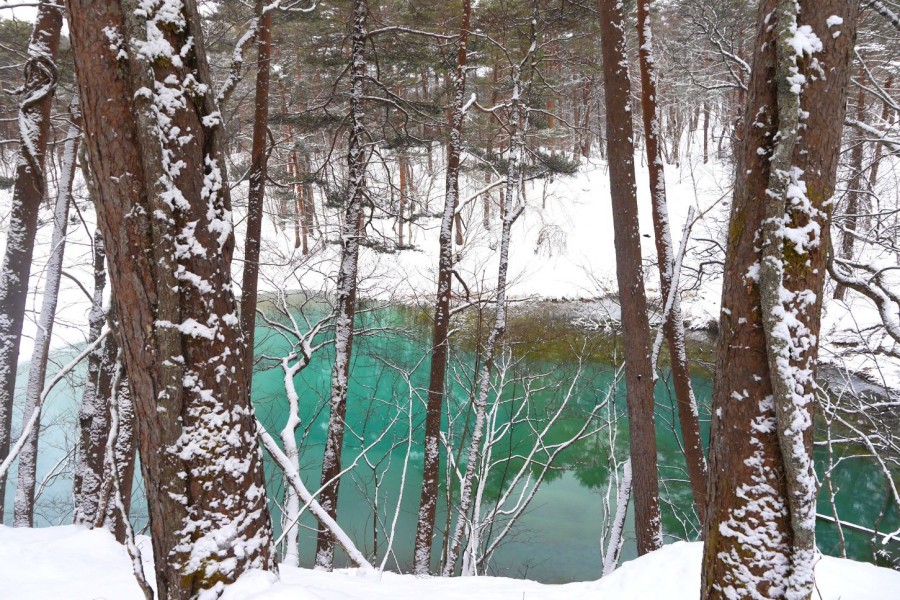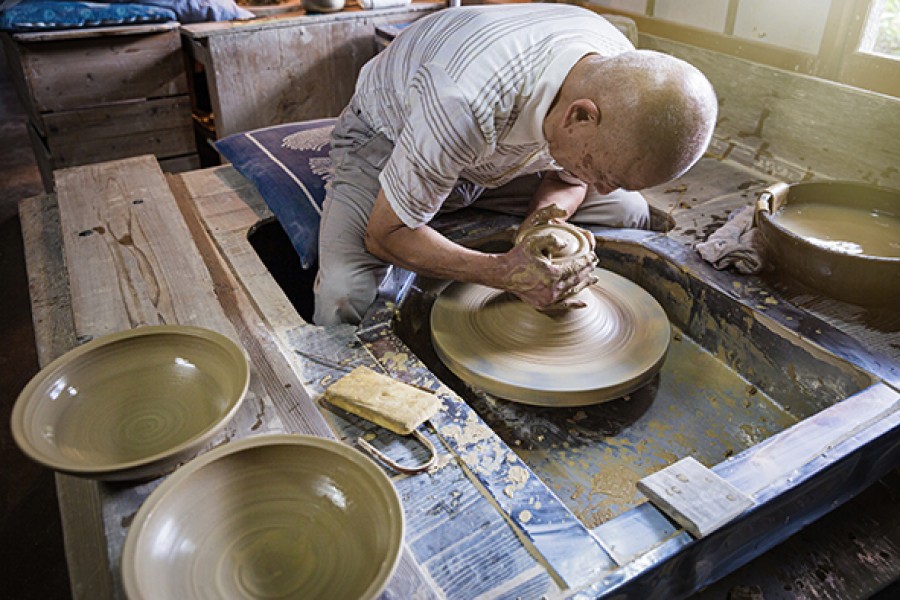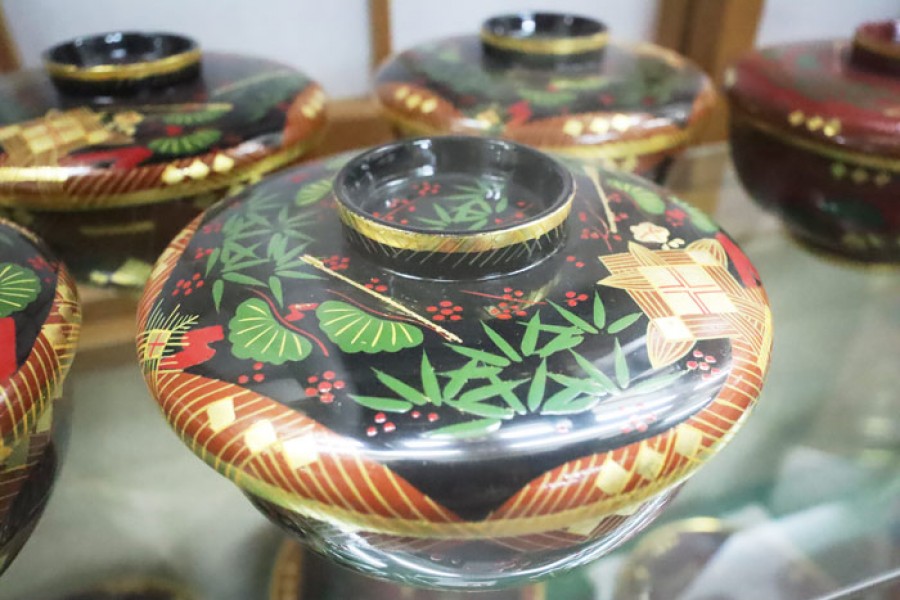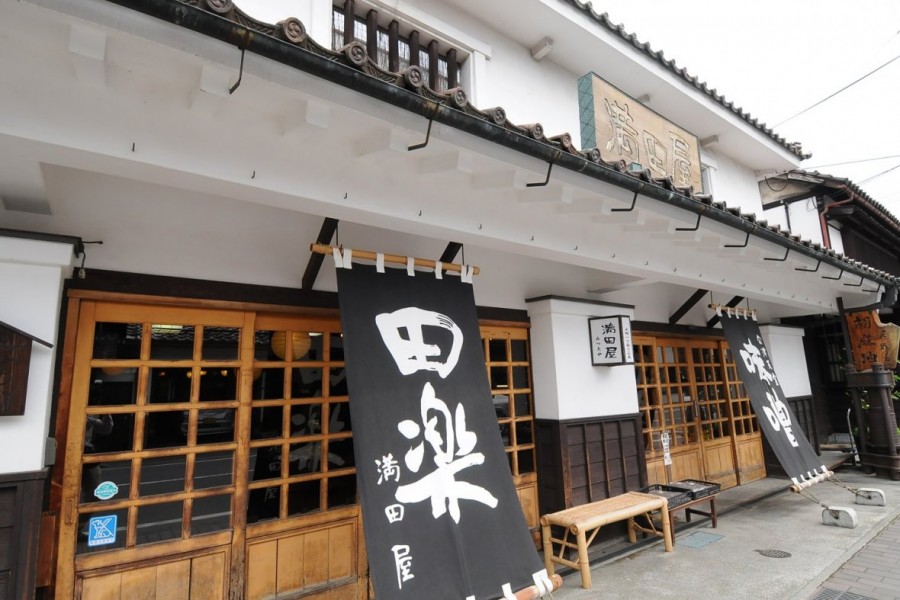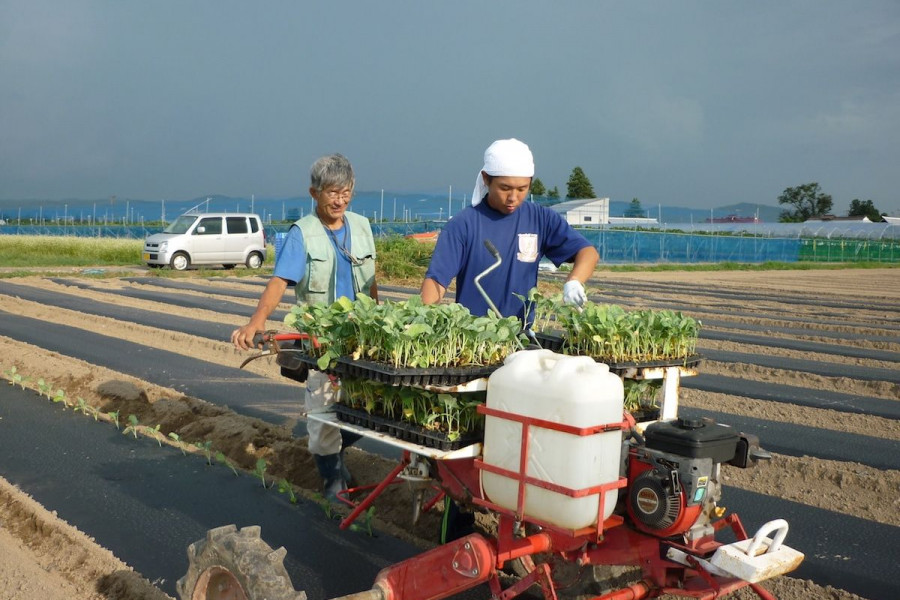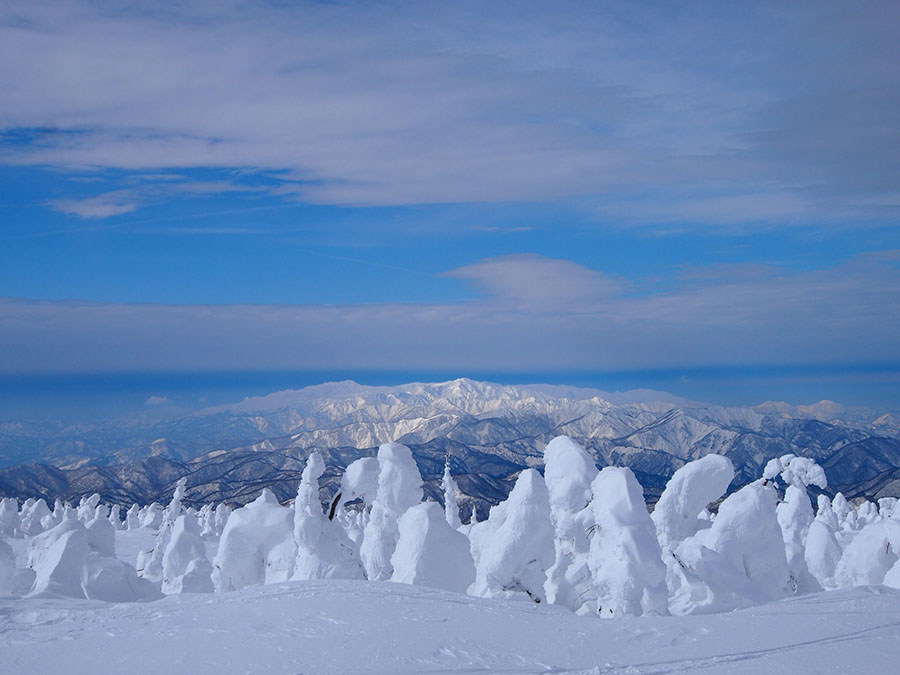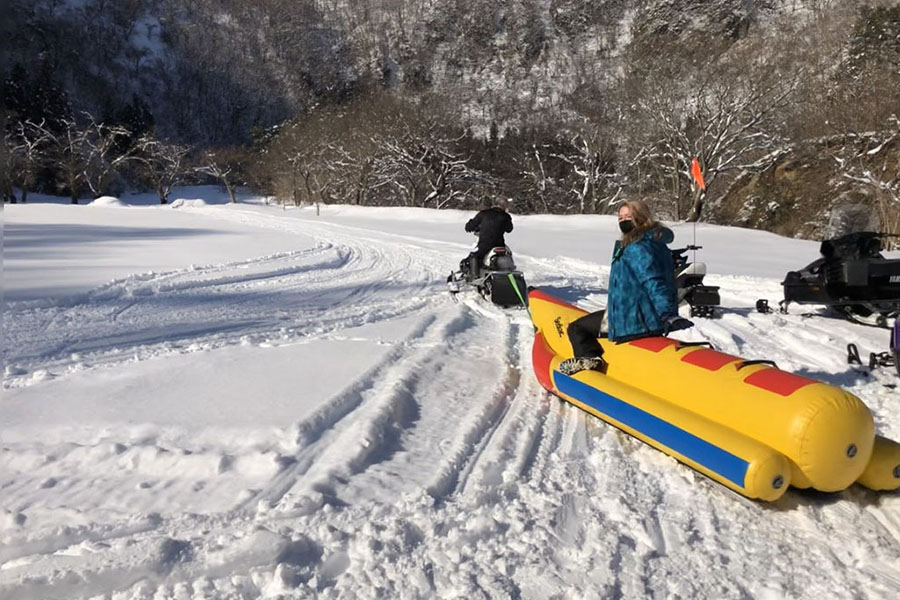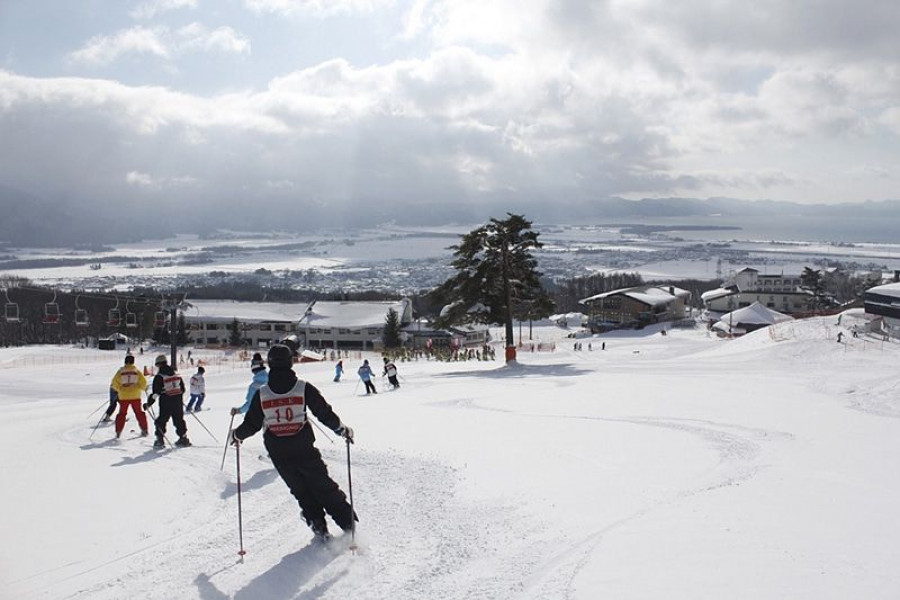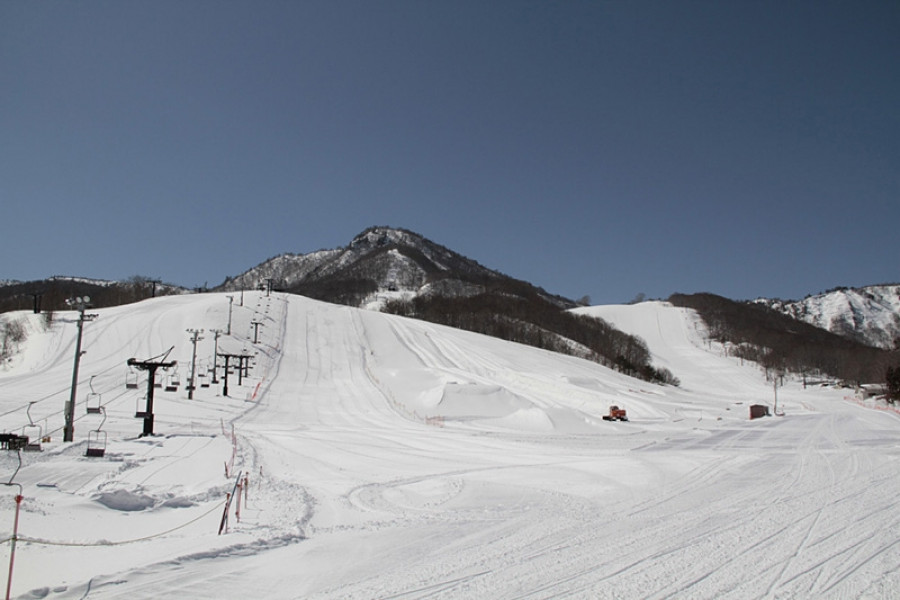A Snowshoe Winter Frolic
Explore a winter wonderland in the Urabandai area. Not feeling up to skiing the slopes of Urabandai? Try a more casual activity that everyone can enjoy; snowshoe trekking through the wintery scenery of Urabandai in Aizu. Take a taxi from Inawashiro Station to Moku-Moku Shizen Juku. It is here that your authentic snowshoe trekking tour will begin. Walk along the snowy paths and see sights not offered by other sightseeing tours in the area. See winter up close and even chance to walk upon frozen lakes or ponds—with the guidance of your travel guide. What sort of animal tracks will you be able to spot along the way as you trek through the fresh snow? Feel the uncharted course of Aizu wilderness. Now that you have become accustomed to the Aizu winter, let’s try some skiing or snowboarding at Hoshino Resorts Nekoma Snow Park & Resort! With slopes for beginners or veterans, you will love everything that Hoshino Resorts Nekoma Snow Park & Resort has to offer. There are a number of facilities that offer snowshoe trekking experiences in the Urabandai area.

